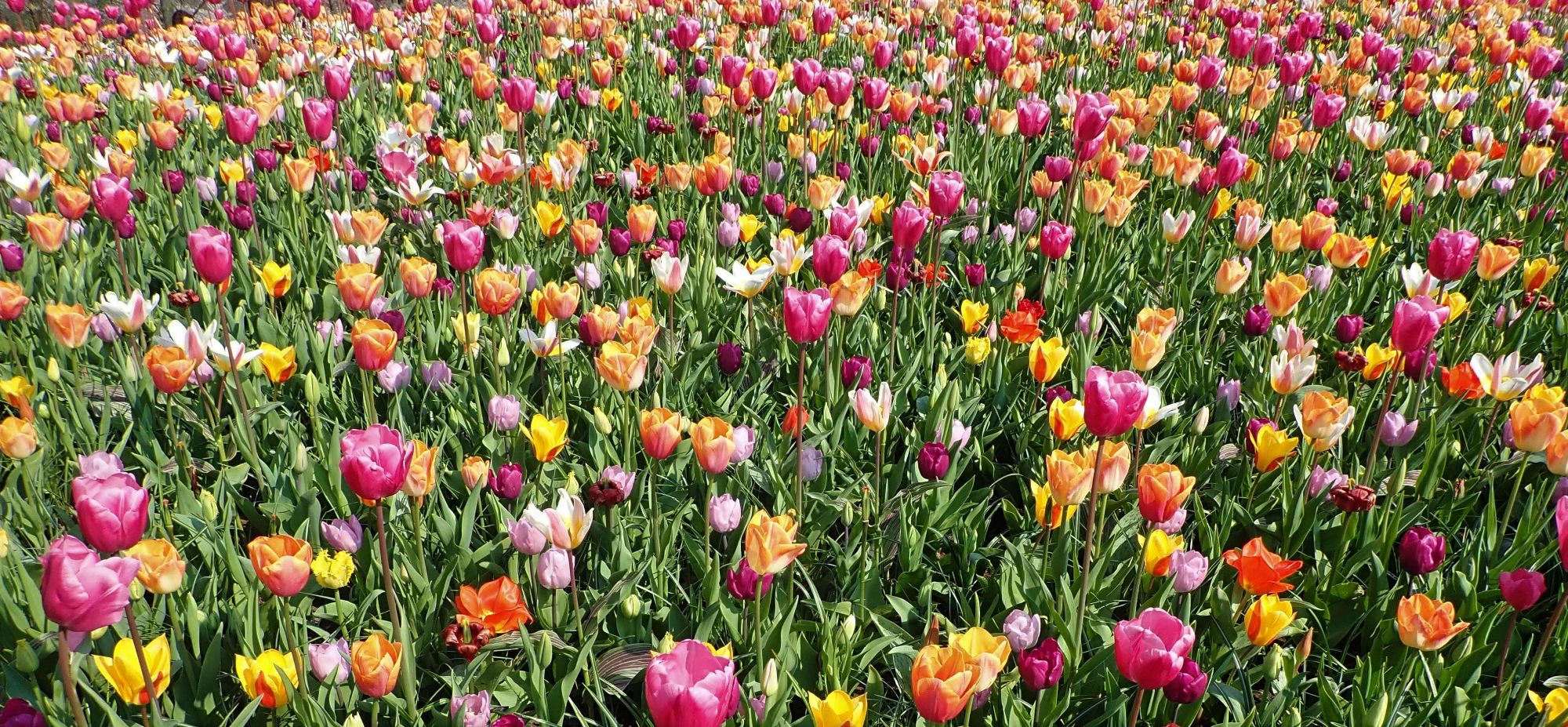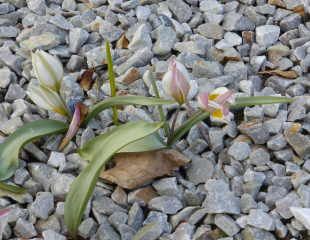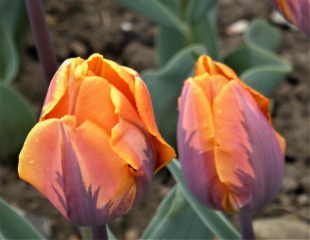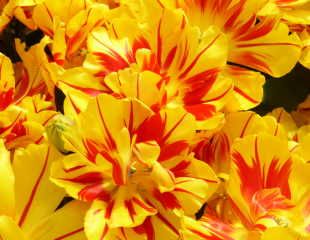The origins and types of Tulip


The earliest types of tulips, and those growing in the wild today are in simple form illustrated right. From these species of Tulip all the different shapes, sizes, and colours were bred to create the array of Tulips we enjoy today.
There are several species of wild tulip found in Central Asia and Caucasus region, also Afganistan, Jordon and Kurdistan. Illustrated is Tulipa Polychroma which is found wild in Afganistan and Jordon. It is a small Tulip with unimpressive flowers and along with Tulipa schrenckii which inhabit the Eurasian steppe, these simple tulips were bred to form the complex flowers we grow today. Contrary to popular belief Tulips did not originate in Holland. One of the earliest references to Tulips is in Persian poetry writings in the thirteenth century, after which there are many references and drawings as Tulips become more popular, especially during the latter part of the Ottoman Empire. The origins of Tulips go back a long way although they do not appear in Europe gardens, drawings or writings, until 1559. The history of the Tulip is fascinating and there is an erudite book called The Tulip by Anna Pavord which is a very detailed history of Tulips. It is a large book running to over 400 pages and takes the reader through the history of the Tulips from humble beginnings to the many species we see today.
Today, there are many types of Tulips offered for sale in garden centres and on line. This page has images and brief descriptions of different tulips to show how wide a range of tulips are on offer and to help you select the best for your garden.
If you find Tulips interesting, I would highly recommend, if visiting Amsterdam during the spring a visit to Keukenhof. Images of Keukenhof gardens can be found on my Pinterest page. Keukenhof gardens are within a short bus ride from Amsterdam are very interesting to visit.
The six main types of Tulips
Single early Tulips

This is a single early Tulip, called Princess Irene. It has a cup-shaped flower which blooms from around Mid March onwards. Typically, this variety has a contrasting flamed colour around the stem.
The early flowering varieties have to withstand more inclement weather and often have study stems.
Best planted in fertile, well-drained soil in a sunny aspect.
Tulip Kaufmanniana

The Kaufmanniana Group of Tulips have single flowers, with coloured basis and are a dwarf variety between 15-30cms. Illustrated is T. Kaufmanniana Giuseppe Verdi.
The flowers open in the sun and bulbs can be naturalised and are one of the few Tulip which may flower in subsequent years.
Double Tulips

Double Tulips have, as you may expect more flowers and illustrated is the eye-catching T. Monsella . It is a great variety to grow, colourful and also scented.
It is an early to mid-spring flowering variety and will flower best in well drained fertile soil with good sun.
Like many tulips this variety is best treated as an annual.
Parrot Tulip
Parrot Tulips are among some of the most elaborate and exotic looking of Tulips. Illustrated here is one of the best known, Tulip Estella Rijnveld. They are a mutation which produces the fringed leaves which are so attractive. Parrot varieties are a later flowering Tulip which bloom in May.
Tulip Peony

This type of Tulip has showy flowers which are not unlike Peony flowers to look at and flower during April and May. This is a very popular long standing variety called Tulip Peony type Angelique. The lovely pink flowers, scented and has the RHS garden merit award.
Lily Tulips

As the name suggests this type of Tulip has a lily-shaped flower and illustrated is Tulipa lily Lady Jane.
Flowering time is late April- May and should be treated as an annual. There are scented varieties of this Tulip as well, such as T. Ballerina.
